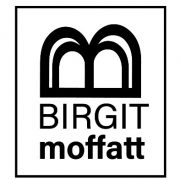Spending a week learning the art of encaustic with Patricia Baldwin Seggebruch in Wanganui (Fibre Arts New Zealand) was a fantastic experience of experimenting a totally new art medium using hot wax in combination with oils, pan pastels, charcoals, inks – basically anything you can imagine to make marks, plus the addition of fabrics, shellac, plaster and tar.
Back home, I couldn’t hardly wait to get a few basic tools and materials to set my little encaustic space in a corner of my studio, which guess what – took over a big part of my studio in no time…
I found I am more drawn to materials like concrete, plaster, tar and rust that can create beautiful textures, and even applied to flat supports like ply wood or paper the final look feels three dimensional through lots of layers of chosen materials.
These are some pieces I did in the workshop





Not that this enough, I signed in the 100 day project, an independently run event of repeating a creative task over (guess) 100 days. Because encaustic is such a wide field I limited myself to a square of paper (as canvas) 13cm x13cm using rust, concrete, tar, plaster and some oil sticks. A perfect way of daily material exploration!
These are some of my first works, see more here!


































 shells showing off ephemerality and perfection
shells showing off ephemerality and perfection
 Spinifex all over the place
Spinifex all over the place

 (a empty beach
(a empty beach almost…
almost… lovely organic forms
lovely organic forms

 Just those New Zealand boats still looking very strange for me.
Just those New Zealand boats still looking very strange for me.




 Dyeing in progress, the teal colour will magically turn into dark blue.
Dyeing in progress, the teal colour will magically turn into dark blue.


 Bound with gum nuts, it event took a bit of the colour!
Bound with gum nuts, it event took a bit of the colour!







 Shibori is more than an introduction to this ancient resist dye technique, with lots of history around the art and beautiful images of different dye patterns. I in particular like the illustrations showing the individual shibori techniques. It also describes some natural dye recipes.
Shibori is more than an introduction to this ancient resist dye technique, with lots of history around the art and beautiful images of different dye patterns. I in particular like the illustrations showing the individual shibori techniques. It also describes some natural dye recipes.

 Eco Colour from India Flint is my natural dye bible, the book is beautifully made, covers a variety of natural dye techniques information about mordents, preparations of fibres and even a list of dye plants. Although I had some difficulties to understand certain aspects in this book (I am an artist not a scientist) the more I learn on my natural dye journey the clearer become some of the explanations.
Eco Colour from India Flint is my natural dye bible, the book is beautifully made, covers a variety of natural dye techniques information about mordents, preparations of fibres and even a list of dye plants. Although I had some difficulties to understand certain aspects in this book (I am an artist not a scientist) the more I learn on my natural dye journey the clearer become some of the explanations.

 Last but not least I purchased the book Natural Processes in Textile Art from Alice Fox last year and again it is beautifully made with easy step by step instructions to get started. It also introduces some established fibre artist working with using nature as inspiration and source for their work.
Last but not least I purchased the book Natural Processes in Textile Art from Alice Fox last year and again it is beautifully made with easy step by step instructions to get started. It also introduces some established fibre artist working with using nature as inspiration and source for their work.
